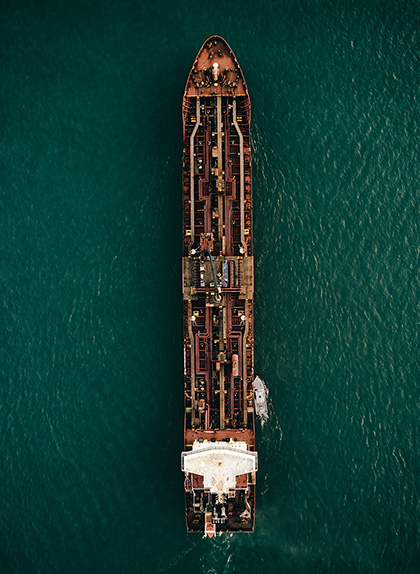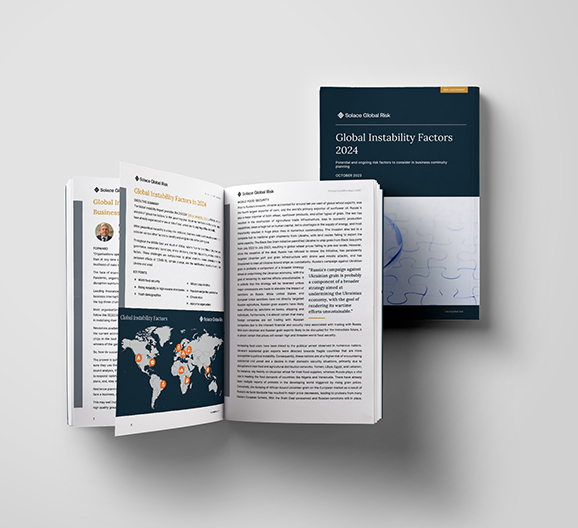Evacuations from Israel and High-Risk Locations Call +44 (0)1202 308810 or Contact Us →

Water Borne Improvised Explosive Devices (WBIED)
8 Mar 2018
The threat of Water-borne Improvised Explosive Devices (WBIED) has developed into a critical issue for seafarers due to a recent escalation of conflict and instability in nations surrounding key maritime choke points. The varied purpose or ideology of nations and non-state actors involved in these conflicts has escalated the threat of one or more of these parties seeking to target shipping or close shipping channels in support of their objectives has become more prominent.
Key Points
- WBIED remain a persistent threat to global maritime operations, particularly in geographic bottlenecks.
- WBIED have been utilised by insurgent and terror groups against military and civilian targets.
- Potentially hostile states are highly likely to utilise WBIED in regional conflicts in order to apply economic and military pressure against adversaries.
Executive Summary
Maritime: The threat of Water-borne Improvised Explosive Devices (WBIED) has developed into a critical issue for seafarers due to a recent escalation of conflict and instability in nations surrounding key maritime choke points. The varied purpose or ideology of nations and non-state actors involved in these conflicts has escalated the threat of one or more of these parties seeking to target shipping or close shipping channels in support of their objectives has become more prominent. The increasingly influential activities of non-state actors potentially make WBIED a more significant threat than conventional weapons due to the relatively non-sophisticated methods of manufacture, and comparative ease of use.
The present situation makes the most likely areas for the deployment of such weapons the Bab-el-Mandeb straits, between the Gulf of Aden and the Red Sea; or the Straits of Hormuz, which forms the narrowest point between the Persian Gulf and the Indian Ocean.
In the former case, the ongoing civil war in Yemen has led to a situation in which the Iran-backed Houthi rebels continue to hold out against the internationally-recognised Yemeni government, supported by the Gulf Arab countries. The Houthi group has sought to target Arab Coalition warships and supply vessels in order to dissuade naval assets from closing with their strongholds, specifically al-Hudaydah. Terror and insurgent groups related to Islamic State (IS) and Al Qaeda (AQ) have also expanded operations within the country, and may seek to target commercial shipping.
The Straits of Hormuz, on the other hand, are threatened principally by Iran, who periodically seek to leverage their ability to restrict marine traffic in order to gain political advantage on the world stage. AQ, or affiliated groups, are also believed to have planned attacks in this area, however the area around the Bab-el-Mandeb is a significantly more permissive environment for their operation.
Historical Deployments and Developments
The most prominent and widely known use of a WBIED was the attack by AQ affiliates on the USS Cole in Aden on 12 October 2000. A small vessel, carrying a shaped charge consisting of between 200-300kg kg of explosive, was brought alongside the USS Cole and detonated. The explosion and resultant damage lead to 17 fatalities and a further 39 wounded.
Despite the infamy of the USS Cole incident, it was not the first, nor most recent, use of these tactics against shipping. Assorted anti-Israeli militant groups made use of small speedboats for suicide attacks since 1973; and the Liberation Tigers of Tamil Eelam, widely known as the Tamil Tigers or LTTE, conducted at least ten small-boat suicide attacks against Sri Lankan warships throughout the period 1990-2008.
In these instances, along with the USS Cole attack, WBIED have been used as an asymmetric force multiplier, generally targeting the conventional forces of a non-state actor’s enemy. These have also, generally occurred in a less vital or congested maritime environments. There have been no successful attacks backed by the realistic premise that the group responsible could continue these on a regular basis and feasibly bar marine traffic. The fact that military assets were the primary targets of these attacks also demonstrated that prevention of trade was not the end-state desired by the attackers in these instances.
Since 2000, however, the threat developed significantly. Whereas attackers previously focussed on military assets, the increased prevalence of religious extremism, and the ideological motivations tied to it, have resulted in an increase of attacks targeting civilians in the land-domain. Similar attacks in the maritime sphere have been scarce, however western intelligence and security agencies have reportedly foiled a series of attempted attacks aimed at commercial traffic. In the vast majority of these cases, the plots have revolved around WBIED on small boats and crewed by suicide bombers. AQ in particular has made a number of efforts to conduct attacks in the Straits of Hormuz, with the Japanese tanker, MV M Star being struck by a relatively ineffective and non-fatal attack in 2010.
In 2015, the Iranian government released both an animated video, and footage of naval exercises against a mock US Nimitz-class aircraft carrier. Prominently featured in both was the use of numerous small craft, potentially carrying WBIED, to conduct swarm attacks on the larger and more sophisticated US vessels. The commentary accompanying the video stated that “martyrdom seeking combatants”, a euphemism for suicide bombers, were a key tool in the Iranian naval arsenal. The behaviour of Iranian vessels when harassing foreign naval and commercial vessels in the Straits of Hormuz from 2008 to present is strongly suggestive that this forms a key part of current Iranian naval doctrine.
The threat of Iranian WBIED remains a threat to commercial shipping due to the ongoing regional rivalry between Iran and the countries of the Gulf Cooperation Council (GCC), led by Saudi Arabia. The GCC countries have a significant economic advantage over Iran, however this is entirely dependent on their oil exports. Should further escalation in regional conflicts occur, Iran may seek to effectively eliminate the GCC’s economic advantages by closing the Straits of Hormuz through attacks on, or harassment of, commercial shipping. Based on the aforementioned exercises, it is highly likely that WBIED would be a key tool in executing such a blockade.
Houthi rebels in Yemen are the most recent users of WBIED, with a number reported to have been deployed against the Arab coalition in the Red Sea. The most significant incident was the attack on the Saudi frigate, Al-Madinah in January 2017, and more recently in a series of suspicious approaches on merchant vessels, followed by a failed attack on a tanker, near Al-Hudaydah in January 2018.
The WBIED used in both confirmed incidents appeared to be remote controlled devices, modified from 10m patrol boats; originating from the United Arab Emirates, donated to the Yemeni coast guard, and seized by the Houthis during the conflict. Based on a captured example, the vessels had been retro-fitted with a hydraulic auto-pilot and an armature attached to the throttle which, in conjunction with an artisanal manufacture control box, permitted the vessel to be remotely piloted. The explosive consisted of the warhead of a Soviet-era anti-shipping missile fitted to improvised pressure switches and a detonator. The suspicious approaches to commercial vessels prior to the most recent attack indicated that the vessels were approached by three similar patrol boats, two of which were manned. This suggests that the range of such devices is presently limited, and similar manned efforts to conduct reconnaissance on targets are likely to continue to act as indicators of a potential attack.
Key electronic components used in the manufacture of these WBIED were sourced from Iran, although the missile warhead and the boat itself, were present in Yemen prior to the outbreak of hostilities. This does not constitute sufficient evidence that Iran had a part in deploying these weapons, but is strongly suggestive that Iran would have the technical capability to deploy such weapons if required.
Solace Global: Your Trusted Partner for Secure Business Travel
At Solace Global, we understand that the well-being of your employees is paramount, especially when it comes to business travel. Our intelligence-driven approach allows us to identify potential threats and vulnerabilities, empowering your organisation to proactively navigate complex environments.
Global Intelligence
Arm yourself with the knowledge to avoid a potential threat from turning into a crisis. Intelligence advisories give you tailored reports to anticipate possible disruptions, mitigate risk and help you make well-informed decisions, faster.

Security Assurance
From tailored risk assessments and executive protection to crisis management, our security solutions guarantee the safety of your business travellers, addressing potential threats and providing swift responses.

Integrated Solutions
Recognising the unique needs of your organisation, our solutions are customised to ensure optimal protection.

Stay informed, stay ahead
Dive into our newest intelligence reports and gain a competitive edge. Uncover insights that matter – discover the intelligence that transforms.
